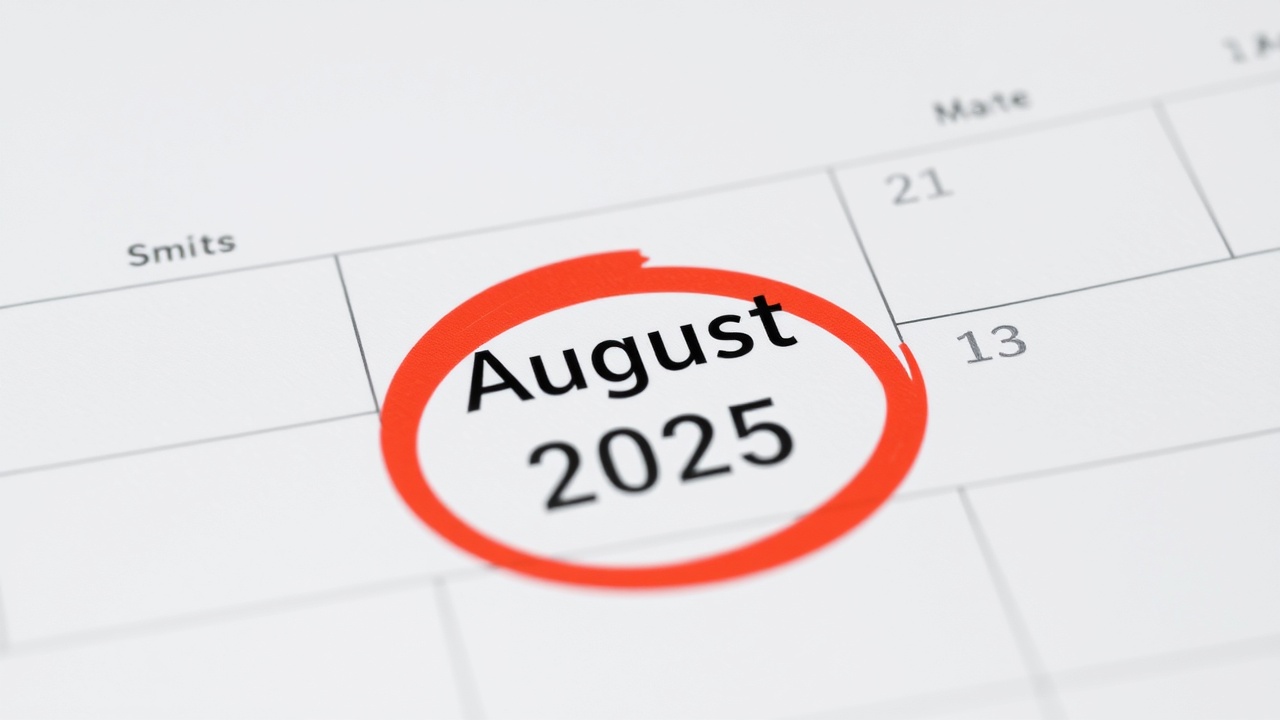The landscape of digital payments in India is set for a significant transformation. A set of new rules will be implemented starting August 1, 2025, bringing substantial changes to the way we conduct financial transactions via UPI. These updates, spearheaded by the National Payments Corporation of India (NPCI), are designed to enhance security, efficiency, and user experience.
Overview of New UPI Rules

Introduction to UPI Changes
The upcoming UPI changes, effective August 1, 2025, represent a comprehensive overhaul of the existing framework. NPCI aims to optimise the Unified Payments Interface for increased usage and address emerging challenges. The new rules encompass various aspects of UPI transactions, including autopay mandates, transaction limits, and peak hours management, which impact both payment service providers and end-users.
Effective Date: August 1, 2025
Starting August 1, 2025, the new UPI rules will take effect. This date marks a pivotal moment for India’s digital payments ecosystem. All stakeholders, including banks, UPI app providers such as Google Pay, and consumers, must be fully aware and prepared for these changes to ensure a seamless transition and the continued efficient operation of the UPI network. The effective August 1 deadline necessitates proactive adaptation across the board.
Importance of Understanding New Rules
Understanding the new rules from August 1, 2025, is crucial for all UPI users. These new UPI rules address everything from transaction limits to autopay functionalities and even how balance checks are handled. Without awareness of these financial changes, users may experience disruptions or be unable to fully utilise the UPI platform. Therefore, it’s imperative to stay informed about these key changes to navigate the evolving digital payments landscape effectively.
Key Changes to UPI Transactions

New Transaction Limits and Restrictions
The new UPI rules, effective August 1, 2025, introduce revised transaction limits and restrictions designed to manage risk and promote responsible usage. The National Payments Corporation of India (NPCI) may impose limits on the number of transactions allowed per day per UPI ID or app, and also restrict transactions during peak hours to maintain system stability. Financial changes are meant to encourage use during non-peak hours. These changes, effective August 1, aim to enhance security.
Balance Check Procedures
Under the new UPI rules from August 1, 2025, the process for balance checks may undergo modifications. The NPCI aims to streamline the process of using UPI to check account balances, potentially introducing faster or more secure methods for retrieving information. The set of new UPI rule changes may include updates to the UPI app interface or backend systems to ensure accurate and real-time bank balance information is displayed. Balance check options may also expand.
Transaction Status Updates
The new UPI rules, effective August 1, 2025, are expected to bring improvements to transaction status updates. Users can expect more prompt and detailed notifications regarding the progress of their transaction via UPI. The NPCI is focusing on providing real-time updates so that users are informed at every step. The changes to the Unified Payments Interface will ensure improved transparency in UPI payment processing, thereby enhancing trust and reducing uncertainty.
UPI Autopay Modifications
Understanding UPI Autopay
UPI autopay is a feature that allows users to set up a recurring payment interface for various services, such as subscriptions or utility bills, via UPI. Payment service providers can offer UPI autopay and users authorize a mandate for regular, automated deductions from their bank accounts. The new rules from August 2025 are set to refine this functionality, which could involve increased security measures or more granular control over per-mandate parameters.
New Autopay Regulations
The latest news indicates that the new rules from August 2025 will introduce revised regulations for UPI autopay mandate management. Changes to the unified payments interface could include stricter authentication protocols for setting up and modifying autopay mandates. NPCI may also implement enhanced monitoring mechanisms to prevent fraudulent activities and ensure that UPI changes provide users with secure UPI payments.
Impact on Google Pay Users
Google Pay users will experience the changes from August 1 related to UPI autopay. These UPI rule changes from today for Google Pay could necessitate adjustments in how users manage their recurring payments interface. For example, the new rule could change the maximum value of transactions allowed per app per day. UPI app users may need to re-authorise existing autopay mandates to comply with the set of new rules, ensuring seamless continuation of their automated UPI transaction schedules.
Financial Implications of UPI Changes

How Changes Affect Bank Accounts
The new UPI rules set to take effect from August 1, 2025, could have notable implications for bank accounts linked via UPI. These changes from August 1 may affect how frequently balance checks can be performed or could introduce new security layers that require additional verification steps. Users might need to update their app settings to align with the changes, ensuring continued smooth transactions.
Peak Hours and Transaction Processing
One of the significant aspects of the new rules starting August 1, 2025, is the management of transactions during peak hours. The National Payments Corporation of India (NPCI) aims to optimise the system by potentially implementing measures such as throttling transactions per UPI app per day during these high-traffic periods. The intention is to maintain system stability and ensure efficient processing even during peak hours, and encourage the use of non-peak hours.
Future of UPI Payments Interface
The new rules are indicative of the evolving future of the UPI payments interface. As digital transactions become increasingly prevalent, the NPCI is proactively adapting the UPI framework to meet emerging needs. These changes could include enhanced security protocols, improved transaction speeds, and the introduction of new features to cater to diverse user requirements. Key changes are intended to sustain UPI’s role in digital payments.
Conclusion and Next Steps

Preparing for Changes from August 1
As August 1, 2025, approaches, it’s essential for all UPI users to prepare for the new UPI rules. Start by reviewing the latest news and official announcements from the National Payments Corporation of India (NPCI) regarding the changes from August 1. Update your app to the latest version to ensure compatibility with the set of new rules, and familiarise yourself with any revised transaction limits or procedures.
Recommendations for UPI Users
To navigate the UPI changes effectively from August 1, users should adopt a proactive approach. It is recommended to review and adjust any autopay mandates to align with the new rules, paying close attention to authentication requirements. Monitor your bank accounts and UPI transactions closely for any discrepancies. This would allow you to use the UPI platform with ease.
Staying Informed on UPI Rule Changes
Staying informed about UPI rule changes is an ongoing process. Regularly check official sources such as the NPCI website and trusted financial news outlets for updates. Be cautious of misinformation and rely on verified information. By remaining vigilant and proactive, users can adapt to these economic changes and continue to use UPI effectively. The changes help promote a reliable payment system.
FAQ
What is the new rule for UPI transactions?
The new rule for UPI transactions, effective from August 1, introduces several changes aimed at enhancing security and user experience. Users will need to verify their identity through additional authentication steps for certain transactions, and transaction limits may be imposed on the maximum transaction amount. These updates are designed to safeguard users and streamline the transaction process.
New UPI Autopay Rule
As of August 1, new rules for UPI (Unified Payments Interface) have been introduced regarding autopay services. These changes aim to enhance user security and improve transaction management.
Key Features of the New UPI Autopay Rule
- Mandatory Approval for Recurring Payments: Users must now provide explicit consent for each recurring payment, ensuring better control over transactions.
- Transaction Limits: There are specified limits on the amount that can be automatically deducted, which vary based on the service provider and user preferences.
- Notification Requirement: Users will receive notifications before any autopay transaction, enabling them to review and approve charges.
- Revocation of Consent: Users have the right to revoke consent for autopay at any time, making it easier to manage subscriptions and payments.
These changes are designed to protect consumers and provide them with greater flexibility and control over their payments.
Conclusion
With the new UPI rules taking effect from August 1, users may need to review the specific guidelines set by their banks and the National Payments Corporation of India (NPCI) regarding international transactions. While UPI has become a popular payment method in India, its acceptance abroad may vary based on agreements with foreign payment networks.
It’s advisable to stay updated on any changes or requirements that might affect the usability of UPI outside India, especially with the new regulations coming into effect.
In conclusion, while UPI may still be usable abroad, it’s essential to be aware of the new rules and ensure compliance with any updated regulations to facilitate seamless transactions.